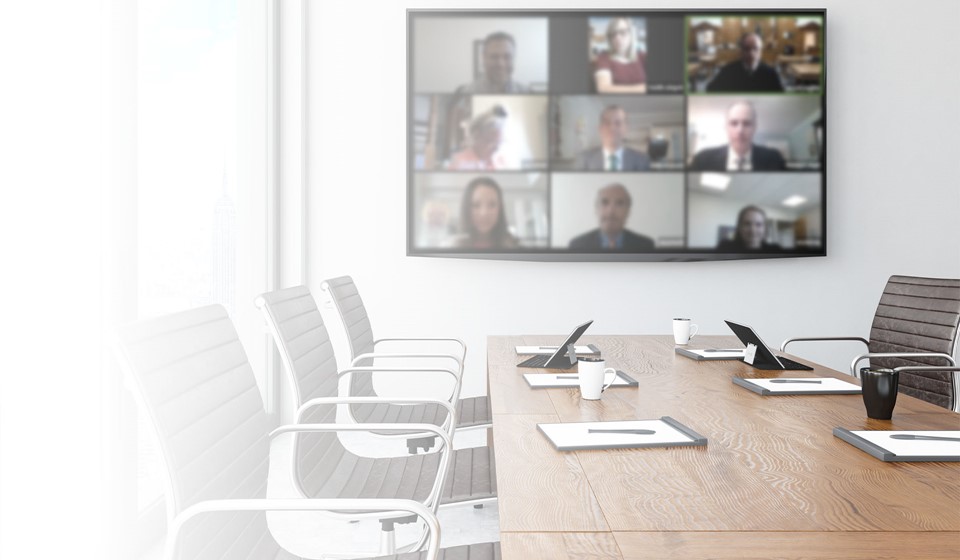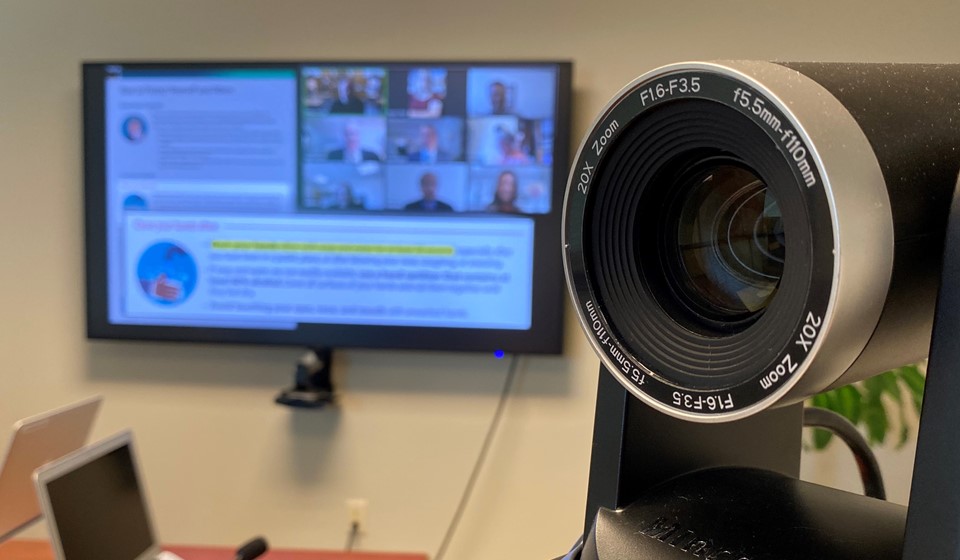American Guardian Warranty Services v. Easy Care
American Guardian Warranty Services v. JCR-Wesley Chapel
Verdict Confirms the Unique Nature of Next Caller’s Solution
RCS Case News: Jury Wipes Out Wakesurfer’s Patent Claims Against Boat Co.
Law360 (May 24, 2021, 5:54 PM EDT) — A federal jury in Tennessee has found that claims in two patents held by a self-proclaimed wakesurfing pioneer were invalid, handing a victory to wakeboarding and tow boat manufacturer Skier’s Choice in an infringement fight.
The verdict came down late Friday, clearing Tennessee-based Skier’s Choice Inc. of all the infringement claims that Malibu Boats LLC leveled in multiple — later consolidated — suits in 2019. Before the trial started, U.S. District Judge Jon P. McCalla ruled that Skier’s Choice already infringed one of the patent’s claims, but the 11-person jury also found that all the claims Malibu asserted in its patents were invalid in the first place.
“We are disappointed with the verdict, and Malibu is evaluating its options for the future of that case. Malibu continues to maintain a broad and robust portfolio of patents, claims and applications related to wakesurfing beyond the four claims that were at issue in this decision,” Cameron Westin of O’Melveny & Myers LLP, who represented Malibu in the case, told Law360 on Monday.
The verdict came after the end of a 10-day trial between the rivals. It featured a group excursion to the court’s parking lot, where jurors had the chance to look at boats made by the companies, which were arranged in order of when the surf system in each was released, according to filings in the case.
The jury, which had one member excused during the trial, found that all the asserted claims in the patents were obvious as anticipated as well invalid for lacking an adequate description of the invention in the patent.
Friday’s verdict followed a mid-trial non-infringement win for Skier’s Choice on May 16, after Judge McCalla ruled that Malibu’s “expert’s conclusions are not supported by the factual record” and scratched out one of the patents Malibu had asserted against Skier’s Choice.
All the patents covered wakesurfing technology, which, unlike wakeboarding, requires a larger wave that’s achieved by weighing a boat down on one side, allowing a surfer to ride the boat’s wake like a wave. Malibu’s patent-protected surf gate lets boaters adjust the surf zone in seconds “at the push of a button,” according to its complaint.
Malibu debuted it back in 2012, claiming its invention eliminated what used to be a “cumbersome” and dangerous process that requires boaters to shift hundreds of pounds of water into ballast tanks on the opposite side of the boat, along with its passengers.
The success and popularity of the invention led competitors to introduce their own surf systems, Malibu claimed, and the company began leveling infringement suits against rivals in the boating world shortly after. Over the past decade, Malibu has inked license agreements with MasterCraft Boat Co. LLC, Nautique Boat Company Inc., Chaparral Boats Inc. and Tige Boats Inc., among others.
Last year, Malibu CEO Jack Springer, who testified at trial, claimed that the company licenses its IP to more than 20 boating brands and claimed that “every significant towboat [original equipment manufacturer] now licenses Malibu’s patents,” except for Skier’s Choice.
Malibu’s arguments to the jury cast Skier’s Choice as an outlier in the marketplace in its refusal to license the technology, and jurors sorted through the language of those licensing agreements.
“You have heard testimony of licenses and settlement agreements between Malibu and third parties concerning patents, including the asserted patents. These third-party licenses and settlement agreements are not the result of a final ruling or judgment by a court or a jury,” Judge McCalla told the jury, according to filings.
Representatives for Skier’s Choice did not respond to a Monday request for comment on the verdict.
The patents-in-suit are U.S. Patent Nos. 10,322,777; and 9,260,161.
Malibu is represented by Cameron Westin, Darin Snyder, David Almeling and Meng Xu of O’Melveny & Myers LLP, and Michael E. Robinson and Matthew M. Googe of Robinson IP Law PLLC.
Skier’s Choice is represented by Ian Garrett McFarland, John T. Winemiller, R. Bradford Brittian and Lindsay Jones of Merchant & Gould PC, and Michael J. LaBrie, Spencer F. Smith and Zachary A.P. Oubre of McAfee & Taft.
The case is Malibu Boats LLC v. Skier’s Choice Inc, case number 3:19-cv-00225, in the U.S. District Court for the Eastern District of Tennessee.
–Additional reporting by Britain Eakin. Editing by Adam LoBelia.
Originally published at Law360 on Monday, May 24, 2021
How to Succeed in the Virtual Age
Want to learn more about doing virtual trials? See our new “Virtual Counsel Table” service offerings by clicking here.
Think a remote trial is “virtually” impossible? Think again.
After completing one of the nation’s very first virtual trials, my confidence in virtual trials has been fully confirmed. For the past 23 years, I have been in courthouses all over the country. I have traveled from one end of the nation to the other and never before had such a pleasant experience as presenting a case virtually.
Ever since COVID-19 became a massive disrupter to the legal industry, I have had to consider whether or not the trial consulting profession would ever go back to the way things were. Truth be told, they will go back somewhat. But never fully back to the point where every trial will be held in a courtroom.
Bench trial vs. jury trial
From a technological and logistical standpoint, there is a fundamental difference between a bench trial and a jury trial. Not only procedurally, but how we present our cases. As we started to wrap our heads around how a trial before a jury could take place, we have learned that there really isn’t a plan to get us back into the courtroom that can be 100% effective in the absence of a vaccine. There are many variables that need to be considered. How can we observe social distancing in a space that was never designed to have enough space to spread out? This is the struggle that we are all facing.Some trials have decided to move their proceedings outside the four walls of a courtroom and utilize conference centers, hotel ballrooms and other large venue spaces to conduct their trials. This certainly can help solve the space dilemma, but at the same time certainly increases the expense of conducting your trial.
Bench trials present far more opportunities and benefits than a jury trial. In a bench trial, you do not have to worry about proximity of the jurors. The judge and court members can virtually be anywhere in the courthouse and do not have to be in the same room. Counsel can be at what I like to call a “Virtual Counsel Table.” Even the court reporter can be remote.
This type of environment allows for maximum social distancing, the ability for the trial team to move around freely when not on camera, and still gives the same technological presentation capabilities as if you were in the courtroom.
Benefits of a virtual trial
I’ll admit I was a bit skeptical of the concept of an entire trial being done virtually. I have certainly had elements of a trial done virtually before. Perhaps a witness who is outside the jurisdiction of the court or otherwise not able to travel. This has been done for a long time.
Of course, one of the most public example of what can go wrong was when Scott Pleasants testified from Colorado during the Florida trial of George Zimmerman. In that particular matter, Pleasants was testifying using Skype. Soon after Pleasants began testifying a swarm of incoming calls flooded the session because of the broadcasting of the Skype username on national television.
Having been through virtual trials since the pandemic started, there are far more positives than negatives. For example, in the virtual trials I have participated in, they have moved much faster and it gave the trial team flexibility to move around when not on camera. Think about that for a moment. If you are not tied to counsel table, you may very well be able to continue to work with other witnesses, prepare for cross examination, communicate with other trial team members, review exhibits, tend to closing arguments or many other tasks that you otherwise wouldn’t be able to.
Drawbacks of a virtual trial
Many trial lawyers’ belief that their presence in the courtroom and their command of the proceedings is critical to their success in a case. That may very well be true in many cases. Our need and desire to make eye contact with each juror (or trier of fact) is sometimes the bedrock of how we determine who we are connecting with and who we feel the need to convince throughout our case. This is a legitimate concern.
This does not just apply to virtual trials though. Even in-person trials with social distancing implemented will deal with this challenge. For example, if the court determines using the gallery to spread out a jury is feasible, you likely will have challenges with line of sight since the jury may very well be behind counsel table. So, what do you do if this is the case? You may want to consider simply turning those tables 90 degrees to make sure you can still see your jury members. It is not the greatest of options, but it is better than having no visibility at all. These are the types of situations that we will have to learn to overcome as we move forward in this new world we are in.
When involved in a virtual trial, there are a few key things that should consider:
Control your environment
Your environment is key. You should always sit indoors in a quiet room and be aware of what is in your background. There is nothing more distracting than having plants growing out of your head. Also be aware of who is around you. Whenever on camera, do not have children, spouses or even other trial team members walking behind you.
You should consider a clean wall without any art on it. While you may like a particular piece of art, you never know who else is seeing it and what it may symbolize to them. Stay as neutral as possible. Most importantly, avoid the use of virtual backgrounds. While Zoom does a fairly good job of removing the background, they are really designed for use with a green screen to properly separate you from whatever is behind you.
It’s all about the sound
For virtual trials, it is all about the sound. Good quality sound is what will make sure the judge, jury and sometimes — even more importantly — the court reporter will be able to understand what you are saying. There are a lot of things that contribute to both good quality sound as well as poor quality sound.
First and foremost, choice of microphones is critical. From what I have personally seen (or heard for that matter) many people are relying on their laptop microphones. Generally, this should be sufficient but also has its drawbacks. Laptop microphones are designed to pick up as much sound as they can from anywhere near the laptop. While they do a fairly good job of picking up your voice, they also tend to pick up air-conditioning units, rustling of papers and many other ambient sounds that you may not want to have picked up by the microphone.
Obviously not everyone is an audio expert, including myself, so the best way to test the quality of your audio is to set up two laptops in two different rooms and have someone on each end listening. Also, if you are using Zoom you can record the session and listen to the quality of the sound.
There are a few different scenarios in which we need to be extremely cognizant of here. I am sure by now we’ve all heard of the term “feedback.” To summarize, feedback is when sound generated by a microphone comes out from a speaker and then back into a microphone again. It creates a distortion of the sound that is very unpleasant to listen to. You can simulate this very same sound by taking two cellphones that are connected and putting them both on speaker phone near each other.
So why does this matter and what do we do about it? It matters because unless you are going to have every person on your trial team in a separate room (which is certainly feasible), you’re not going to want to have two microphones in the same room unless you have special equipment to accommodate such a configuration.
Here a few scenarios in which we can overcome the issue of feedback:
- Have each participant in separate rooms. Obviously, you can use the internal speaker and microphone on your laptop. That said, it is highly recommended to get an external microphone that you can control the direction of where the sound is coming from. The Blue Yeti microphone is a great option. It is USB powered and has a variety of options depending on how many people there are around the microphone.
- Have each participant use headphones with microphones. All sound will need to go through the headphones, including outputs (speakers) and inputs (microphones). This can make it a little awkward for people in the same room because they will hear the other person speaking live as well as through their headphones. You can most definitely expect a little bit of Internet lag (or delay) which will make it sound like you are hearing everything twice.
- Use a microphone mixer with XLR based microphones. You will want to invest in an XLR to USB converter (see Shure MVI as an example) so you can run the audio back to your laptop as a microphone input. By having all the microphones run through the same input, you no longer have to worry about feedback as they are one source, not two or more. Zoom also does a particularly good job of cancelling out the sound that comes out your speakers to avoid feedback. I would also suggest having a pair of external speakers and point them away from your microphones to avoid any chance of feedback.
What you see is what you get
While I recommend using external microphones for sound, video may be a little bit of a mixed bag. While our laptops produce an acceptable image quality, they do not always produce the best image depending on your laptop. If the quality of your camera on your laptop is not of a high enough quality in your opinion, you may want to consider an external camera. I personally use a Logitech BCC950. It’s versatile, has two height options so it can sit behind your laptop or on a table surface, it has a built-in microphone and speaker, zoom/pan/tilt control as well as a built in mute button. There are a variety of options available, so I suggest you read reviews as well as talk to others than may have invested in an external camera.
One of the most important things about cameras for Zoom (or other similar platforms) is their proximity and placement. Now that we are far more comfortable after half a year of virtual meetings and being on camera, we have also come to learn certain things about virtual etiquette.
First and foremost, look into the camera whenever possible. The placement of cameras just above the middle of your monitor is no coincidence. When looking at your screen it very much looks like you are looking into the camera itself. If you place an external camera in another position away from your screen, it may give the impression you are not paying attention or otherwise distracted. If you are using an external camera, consider placing it on top of your monitor or just behind and above the laptop itself.
Internet connectivity
Internet connectivity and the bandwidth available to you are incredibly important. When on a virtual call, it requires a large amount of bandwidth not only to push your audio and video over the Internet, but also to view other people’s streams as well. Since many of us are working virtually from home right now, our Internet bandwidth will vary greatly depending upon your service provider and the package you have selected from them.
Whenever possible, use a hardwired connection. WiFi always will have slower speeds. If you are operating from within your firm’s office space, your WiFi may be limited to minimize the amount of bandwidth you can use.
Run a speed test on your Internet connection from where you will be when participating in a virtual trial (e.g. www.speedtest.net). At a minimum, you want to see at least 20-40 Mbps download speed and 15-20 Mbps upload speed to avoid connectivity issues.
Always have a backup in case your Internet connection goes out. Most cellular providers have options for hotspots, and you may even have a hotspot feature through your cellphone.
If working from home, don’t have your kids play video games while you are on a virtual call. It will draw tremendous bandwidth resources away from your session.
So now that we have our equipment taken care of, here are some of the things we need to consider procedurally for our virtual trials.
Exhibits and presentations
In all reality, the methods of presenting exhibits and other important case materials really has not changed much at all. As a matter of fact, the ability to present is far easier than in the past. The biggest change is the way we connect. Traditionally, if one were to present in person in a courtroom, they would be relying on equipment such as projectors, large screen TV’s, or desktop monitors. Since nearly all the video conferencing platforms (e.g. Zoom, GoToMeeting) have desktop sharing features, you are essentially using that as a replacement for the external displays I have mentioned. If you are interested in presenting documents, you may want to look at programs like TrialDirector, Limine or OnCue as tools to help you present. For others, you may find it easier to simply show your documents using Adobe Acrobat. Everyone has their own learning curve so certainly look at the resources available to you and perhaps even test drive a few different solutions until you find what is right for you.
Light at the end of the tunnel
While the current times have presented us with unprecedented challenges, they have also created opportunities that go beyond what we could have thought possible. Virtual trials ultimately may lead to faster dockets, less travel and give us the ability to take on more cases thus increasing our case bandwidth and even revenues.
Tips and tricks
- Make sure your laptop is plugged in. There is nothing more embarrassing then seeing a witness or an attorney having to scramble in the middle of testimony to plug in a laptop.
- Turn off your computer sounds (not the sound on your computer). This will avoid having a sound ding every time something happens on your computer.
- Close Outlook or whatever email software you use on your meeting laptop.
- Remember to use your mute button when you are not speaking. Your microphones are typically more sensitive to sound than our ears are. If you whisper something to someone and the mic picks it up, everyone will hear what you said.
- If you plan on using any instant messenger technology, make sure you do not use the messaging tools associated with your virtual session. You may accidentally send a message to the wrong person which could not only be embarrassing, but potentially damaging to your case.
Originally published at Wisconsin Law Journal on Tuesday, September 15, 2020
Del. Court Tests Remote Trials With Water Heater IP Suit
Law360 (August 14, 2020, 10:15 PM EDT) — Delaware’s chief federal judge heard opening statements Friday in a bench trial conducted by video conference, concerning one water heater maker’s claims that a rival’s low-emission model infringes its intellectual property.
The trial between plaintiff A.O. Smith Corp. and the defendant Bradford White Corp. appears to be the first fully remote trial conducted by Chief Judge Leonard Stark during the coronavirus pandemic. It is expected to run about one week.
At the start of opening statements, A.O. Smith attorney David A. Bilson of Phillips Goldman McLaughlin & Hall PA gave Judge Stark a brief history of the family-owned hot water heater company, which dates back to 1874.
Bilson then described how California in 2012 tightened emissions standards for water heaters, requiring them to give off “ultra low” levels of nitrogen oxides, or NOx. Even though more efficient, modern water heaters could hit these standards, A.O. Smith discovered that consumers didn’t want to buy them because they required improved ventilation systems, he said.
Bilson said that A.O. Smith inventor Eddie Smith, who has been at the company since 1991, came up with the idea to use components called a power burner and exhaust plenum to create a new water heater that met the California emissions standards but was compatible with conventional exhaust systems.
Bradford White launched its own “ultra low NOx” water heaters in August 2012, Bilson said. But this “U Series” of products didn’t sell, and months later Bradford White applied for its own patent for a water heater that infringes A.O. Smith’s technology and launched its infringing so-called Commander product line in 2014, he continued.
A.O. Smith is seeking a reasonable royalty of $500 per unit sold, Bilson said.
Bilson told Judge Stark that Smith, along with A.O. Smith Chief Technology Officer Robert Heideman and Vice President of Engineering Greg Reynolds, would be testifying to describe the invention.
Bradford White attorney Andrew J. Koopman of RatnerPrestia told Judge Stark during his opening statement that “this case is about a failure of proof.”
Koopman said that A.O. Smith was trying to accuse Bradford White of infringement without actually testing Bradford White’s Commander series water heater, and that testing showed the Commander series doesn’t actually infringe.
Koopman told Judge Stark that A.O. Smith’s experts had failed to use the claims construction he had settled in their testing, and therefore can’t actually say whether Bradford White’s water heaters infringe A.O. Smith’s patent.
Public and press access to the trial is provided via an audio-only phone number, so exactly how the remote video trial was conducted was not apparent.
The proceedings did appear to go off smoothly, with only slight hiccups when, on a couple of occasions, the companies’ attorneys failed to take themselves off mute before trying to speak at the beginning of the day’s proceedings.
The trial comes one month after Judge Stark ordered a postponement in a jury trial originally planned to start this month between Sunoco and Magellan Midstream over gasoline patents, scrapping an earlier experimental plan to have jurors attend in-person with witnesses testifying remotely due to the pandemic.
Judge Stark postponed the trial, which had been scheduled for Aug. 3, after Sunoco Partners Marketing & Terminals LLC requested a postponement, citing increasing COVID-19 cases in Delaware. Magellan Midstream Partners LP, on the other hand, said the case was ready for trial.
The patent-in-suit is U.S. Patent No. 8,375,897.
A.O. Smith is represented by John C. Phillips Jr. and David A. Bilson of Phillips Goldman McLaughlin & Hall PA and S. Edward Sarskas and Kenneth M. Albridge III of Michael Best & Friedrich LLP.
Bradford White is represented by Andrew J. Koopman, Christopher H. Blaszkowski and Benjamin E. Leace of RatnerPrestia.
The case is A.O. Smith Corporation v. Bradford White Corporation, case number 1:18-cv-00412, in the District of Delaware.
–Additional reporting by Sarah Jarvis. Editing by Haylee Pearl.
Originally published at Law 360 on Friday, August 14, 2020
Rosenberg Featured in WCBA CEO Spotlight
On March 31st, Rob Rosenberg, President of Rosenberg Consulting Services (RCS), was featured by the Waukesha County Business Alliance in the CEO Spotlight. RCS has been a proud member of the WCBA since 2017.
Q: Describe your business in 2 sentences or less:
A: Rosenberg Consulting Services provides strategic visual consulting services to law firms when they go to trial. We help communicate complex information in a easy to understand format and translate them into visual building blocks for fact finders.
Q. What has been your biggest challenge in running your business?
A. Our biggest challenges have always been making sure that we find a healthy work/home life balance. I’ve learned that most success starts in the home and have worked very hard to incorporate a healthy balance in all facets of my life.
Q. What is the most important lesson you’ve learned while running your business?
A. One of the most important things I have learned over the years is to treat people with kindness. Building the people around you up versus dressing them down is always a sure way to help others be better at their jobs.
Q. What is your personal key to success?
A. When I started Rosenberg Consulting, someone asked me (before coming to work for me) what I wanted the company to stand for. I said to them “I want to do good work for good clients and have fun doing it.” I’ve stayed as true to that as possible over the years and I’m still having fun.
Q. What’s the first job you ever had?
A. The first job I ever had was when I was 11 or 12. I used to deliver transcripts to law firms throughout Chicago for my father’s court reporting firm. I learned my way around downtown Chicago as well as some of the biggest law firms in the country at a very young age. It was a great experience.
Q. What’s your dream job?
A. I’m not sure I ever had a “dream job.” I like having a “reality job.” That mindset keeps me grounded in what I’m doing versus what I’d rather be doing.
Q. What book are you currently reading or would you recommend?
A. Admittedly, I don’t read many books. I read a lot of trade pieces and tons of news. I like to keep up on what’s happening in the world. However, the last book I read was fantastic. The Devil in the White City was an amazing read. Being from Chicago, I learned things I didn’t know about the city I grew up in.
Q. What is something unique about you?
A. A lot of people don’t know this, but I actually studied art/photography in college and not law. All of my knowledge of the law comes from experience working on many high stakes cases. That sort of makes me a professional layman in law.
Q. What is your favorite pastime?
A. I would say my favorite activity is to travel. My family and I travel a lot. We love to explore new places and try new things.
Documentary looks at defense of Geyser in Slender Man stabbing
In May 2014, two 12-year-old Waukesha girls, Morgan Geyser and Anissa Weier, lured their friend, Payton Leutner, into a Waukesha park and stabbed her 19 times.
It was the start of a case that quickly became national news and continues to enthrall filmmakers. In 2017, HBO released “Beware the Slender Man,” a documentary which its makers alleged would explain why Weier and Geyser had done what they did. Last year, Sony Pictures came out with “Slender Man,” a horror film about four friends who appear to have summoned the character when one of them goes missing.
Now, the latest work to crop up is a documentary called “Slender Man Stabbing: The Untold Story,” which was released last month on the cable channel REELZ.
REELZ’s piece, produced by Dorsey Pictures, takes a particularly close look at Geyser. The film features interviews not only with the lawyers involved in the case, including one of Geyser’s defense lawyers, the Waukesha attorney Tony Cotton, but also investigators and Geyser’s trial consultants, one of whom was Rob Rosenberg, owner of Hartland-based Rosenberg Consulting Services.
“As we go through the process, especially in litigation, you’re dealing with things as they’re happening, but you’re also trying to form the long-term strategy,” Rosenberg said. “I think once all is done … I think that you have a better understanding of the impact of the decisions that were made along the way.”
He said he thought the filmmakers had compiled an accurate presentation of what had happened while remaining solicitous of the victim and providing a good explanation of Rosenberg Consulting Service’s role in the defense.
In the end, Geyser pleaded guilty to attempted first-degree homicide as part of a deal struck with prosecutors and was sentenced last year to 40 years in a mental hospital. She recently filed an appeal. A jury separately sentenced Weier, who pleaded guilty to a reduced charge, to a mental hospital for 25 years.
So, after looking back at the case, does Rosenberg feel that he and his team did all they could for Geyser, or at least got her some justice?
It depends on the measuring stick you use. Rosenberg noted that although getting Geyser home was a goal, it was not the most likely outcome.
“If our measurement was first and foremost to Morgan the care that she needed, I think we were extremely successful,” he said. “And we also kept Morgan out of jail. That was a huge victory.”
To defend Geyser, Rosenberg Consulting Services, Rosenberg himself and his team used a technique called Wizpor, which was devised by Florida-based trial consultant Amy Singer, who was also featured in the film. The technique involves doing mock trials and tailoring attorneys’ arguments using real-time advice from online focus groups.
Rosenberg said the film hit on the same argument Geyser’s defense team would have used at trial. “You probably heard throughout the documentary this constant reference to a comparison of mental illness to diseases like leukemia and cancer,” he said. “One of the cornerstones of our strategy was to properly analogize it to that.
“In all fairness, that’s not even just a strategy. That’s a reality. Our job really was to … help shape the perception so that people could see the reality.”
Originally published at Wisconsin Law Journal on Monday, February 25, 2019
RCS President, Rob Rosenberg, Featured in Documentary Film
RCS President, Rob Rosenberg, was featured in a documentary related to the infamous case, State of Wisconsin v. Morgan Geyser (aka Slenderman Stabbing case). Rosenberg was the lead trial consultant for the defense (Geyser) and helped successfully guide the team to keeping Morgan out of jail and establish extensive psychiatric care services.






